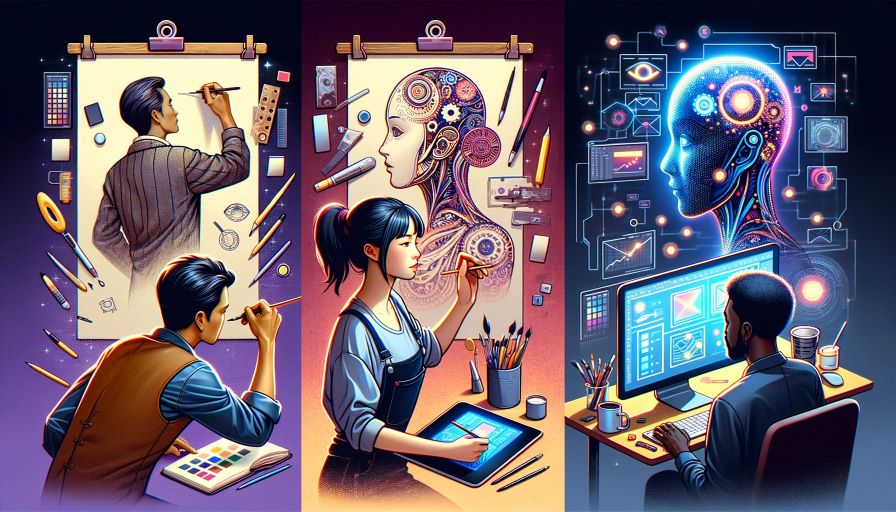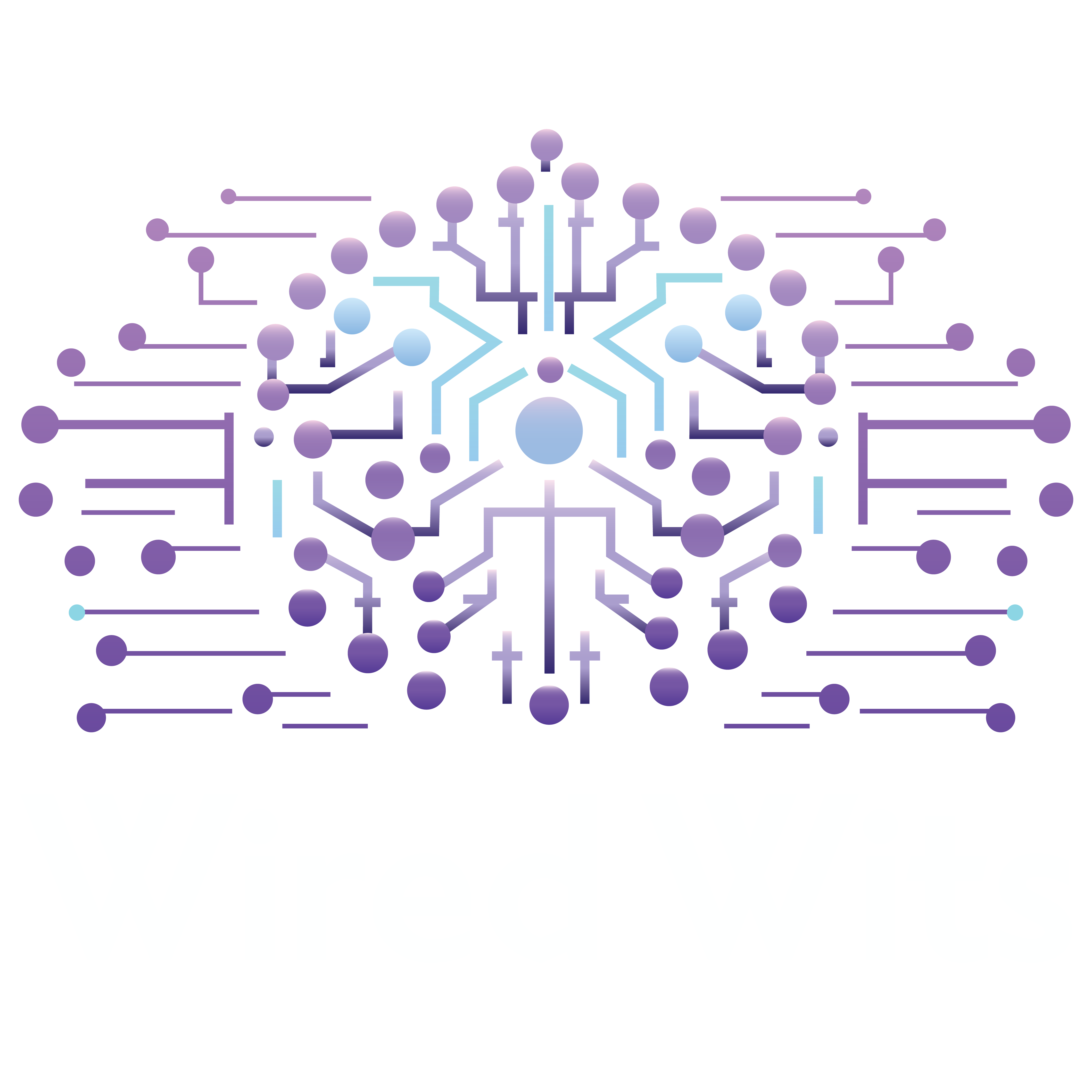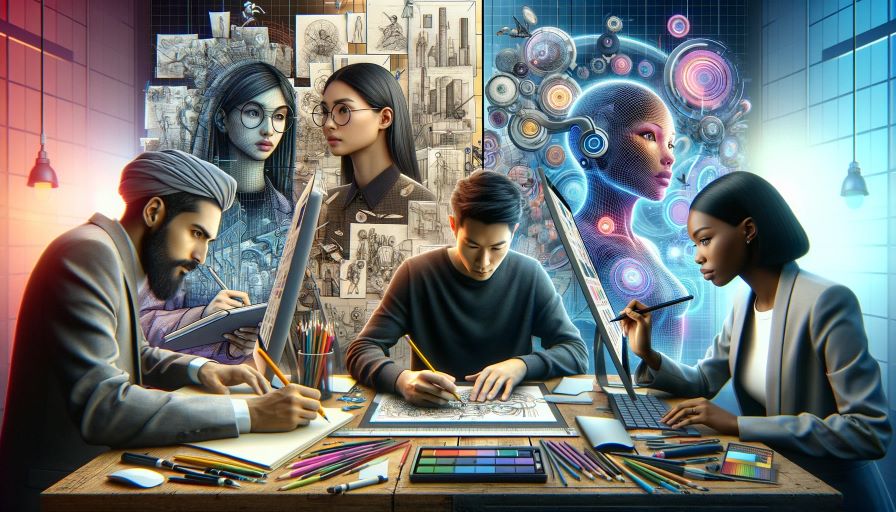Unleashing Creativity: AI’s New Era in Graphic Design
Welcome to “AI’s New Era in Graphic Design”, where innovation meets creativity in the entrepreneurial world. This era isn’t just about new tools; it’s a paradigm shift in how we conceive and execute design. For entrepreneurs, this transformation is not merely a trend but a fundamental change in the landscape of graphic design, driven by AI.
In this guide, we explore how AI is rewriting the rules of graphic design. AI offers entrepreneurs unprecedented opportunities for creativity and efficiency. From the inception of a logo to the final touches of a marketing campaign, AI’s new era in graphic design is redefining what’s possible, making advanced design more accessible than ever.
Join us as we delve into this groundbreaking journey. We’ll uncover the myriad ways in which AI is empowering entrepreneurs, enhancing their ability to tell their brand’s story in visually compelling ways. This is more than an evolution; it’s a revolution in the realm of graphic design, fueled by the power of AI.
Understanding Tools of AI’s New Era in Graphic Design
AI’s New Era in Graphic Design has ushered in a suite of tools that are redefining creativity and efficiency for entrepreneurs. This section explores the most impactful AI tools in the realm of graphic design, each serving unique purposes and driving innovation.
Image Generation and Editing: At the forefront are tools like DALL-E, which exemplify the capabilities of AI in creating stunning visuals from mere textual descriptions. These tools aren’t just about generating images; they’re about enhancing and editing photos with an efficiency and creativity that were previously unattainable. They enable entrepreneurs to quickly materialize ideas into visual realities, breaking down the barriers between imagination and digital representation.
AI in Graphic Design: Beyond image creation, AI plays a pivotal role in automating routine design tasks. Specifically, this includes tasks such as logo creation, branding materials, and even layout design. Furthermore, tools equipped with AI algorithms can analyze design trends. Additionally, they understand brand ethos, and effectively generate design options that resonate with the target audience. This automation allows entrepreneurs to focus on strategic aspects of their business, while AI handles the intricacies of design.
AI for Video Production: The realm of video production has also been revolutionized by AI. From editing to visual effects, AI tools are streamlining the video production process. They can automatically edit videos based on predefined parameters, create realistic visual effects, and even generate video content from scratch. This not only saves time but also opens up new creative possibilities for entrepreneurs looking to leverage video content for their business ventures.
Each of these tools represents a facet of AI’s new era in graphic design. Each providing entrepreneurs with the means to elevate their visual content and storytelling like never before.
The Evolution of Graphic Design: From Traditional to AI’s New Era in Graphic Design

Graphic design has undergone a remarkable transformation. Its journey from traditional methods to AI-driven processes is a tale of technological evolution and creative innovation.
The Roots – Traditional Graphic Design: Originally, graphic design was a purely manual process. It involved brainstorming, hand-drawn sketches, and physical drafts. This era of design was heavily reliant on the designer’s artistic skill and creativity. Moreover, while it allowed for personalized craftsmanship, it was time-intensive and laborious. Additionally, iterative designing required patience and meticulous attention to detail.
The Digital Shift – Computer-Aided Design (CAD): Subsequently, computers changed the game. The advent of computers brought a significant shift. Graphic design embraced digital tools, entering the era of computer-aided design. Software like Adobe Photoshop and Illustrator revolutionized the field. They brought precision, efficiency, and new possibilities. Consequently, designers could now experiment more freely, with less time spent on manual tasks. However, this phase still required significant technical skill and design knowledge. Next, we will dive into AI’s new era of graphic design.
The Emergence of AI in Graphic Design
We’re now entering an exciting chapter: AI’s new era in graphic design. This evolution is significant, marking a departure from traditional and digital methods to a more intelligent approach.
Integrating AI into the Design Process: AI tools are seamlessly blending into the graphic design workflow. They’re not just add-ons; they’re becoming integral parts of the creative process. From conceptualization to final design, AI assists at every step. It’s simplifying tasks that once took hours. Designers are now using AI for tasks like color scheme selection, layout generation, and even initial concept development. You can take a look at our post Using DALL-E in Entrepreneurship specifically.
Efficiency and Cost-Effectiveness: One of the standout benefits of AI in graphic design is efficiency. Projects that used to take days can now be completed in a fraction of the time. This speed doesn’t just save time; it also cuts costs. With AI handling routine aspects of design, the overall time and resources spent on projects decrease significantly.
Accessibility for Non-Designers: AI is also democratizing graphic design. It’s making design more accessible to non-designers. Entrepreneurs without a design background can now produce professional-level visuals. AI tools offer user-friendly interfaces and guidance, making it easier for anyone to create compelling designs.
The Current Frontier – AI-Driven Design
Today, we’re stepping into the era of AI-driven graphic design. Remarkably, AI tools are transforming the landscape. They not only automate routine tasks but also offer innovative solutions for complex challenges. The role of AI spans from basic image editing to creating sophisticated designs, a leap that is making high-quality design more accessible for entrepreneurs.
Moreover, graphic design has evolved from manual sketching to computer-aided precision, and now, impressively, to AI-driven innovation. Each stage has introduced new tools and possibilities. Currently, AI’s new era in graphic design is setting a fresh paradigm, significantly making it easier and more efficient for entrepreneurs to harness the power of visual communication.
Comparing Traditional and AI-Enhanced Design
As we delve deeper into the world of graphic design, it’s crucial to compare the old and the new. This comparison sheds light on just how transformative AI has been.
Firstly, AI is leveling the playing field. Traditional design demanded specialized skills. Now, AI tools simplify complex tasks. They’re user-friendly. This change is huge. It means more entrepreneurs can create quality designs without years of training.
Next, let’s talk about creativity. AI isn’t just a tool; it’s a muse. It offers new perspectives. Designers can start with AI-generated templates and then add their personal touch. This collaboration between human and AI creativity is breeding innovation.
Then there’s the speed factor. Traditional design could be slow. With AI, it’s a different story. Design cycles are shorter. Revisions take less time. This speed is a boon for fast-paced business environments.
In conclusion, AI is not just changing; it’s revolutionizing graphic design. It’s breaking down barriers, sparking creativity, and accelerating production. We’ve moved from manual sketching to AI-driven design. This evolution is more than just technological. It’s a shift in how we approach and execute design.
The Future Outlook and Ethical Considerations of AI in Graphic Design
As we embrace AI’s new era in graphic design, it’s important to look ahead and consider the ethical implications.
Firstly, the future looks bright and full of possibilities. AI’s evolution in graphic design is likely to continue at a rapid pace. We can expect even more intuitive tools. Tools that understand and anticipate designer needs. This progress could lead to unprecedented customization and creativity in design.
However, with great power comes great responsibility. AI in design raises ethical questions. One major concern is originality. How much of a design should be AI-generated? There’s also the issue of job displacement. As AI tools become more capable, what’s the role of the traditional designer? These are questions we must grapple with as the technology advances.
The key lies in balance. AI should be a tool, not a replacement for human creativity. It’s about leveraging AI to enhance human skills, not replace them. This balance is crucial for maintaining the integrity and artistry of design.
In summary, AI’s new era in graphic design is an exciting journey. It’s one that brings both innovation and challenges. As we look to the future, it’s important to navigate these waters with care and optimism. By doing so, we ensure that AI in graphic design remains a force for good, empowering entrepreneurs and designers alike.
Embracing AI in Graphic Design for Entrepreneurial Success
As we wrap up our exploration into AI’s new era in graphic design, it’s clear that we’re witnessing a significant shift. AI is not just altering the landscape of design; it’s redefining what’s possible. For entrepreneurs, this means greater accessibility to high-quality design, increased efficiency, and the ability to harness creativity like never before.
But this journey isn’t just about observing changes; it’s about being a part of them. We invite you to join the conversation and share your experiences. How has AI influenced your approach to graphic design? What challenges have you faced in your entrepreneurial journey?
Connect with us in the comments below or at our Wired Wits subreddit r/wiredwits. Here, let’s discuss, debate, and grow together. Indeed, your insights are invaluable, and, through sharing, your stories can inspire others on similar paths.
Subsequently, join us at the Wired Wits Watercooler, a dynamic space for questions, surveys, and shared learning. Crucially, your participation helps us all gain a deeper understanding of the entrepreneurial landscape in this AI-driven era.
Furthermore, together, we’re not just witnessing a new era in graphic design; we’re actively shaping it. Consequently, let’s continue this exciting journey on social media, our subreddit, and, of course, the Wired Wits Watercooler. Significantly, your voice is a crucial part of this evolving narrative.

